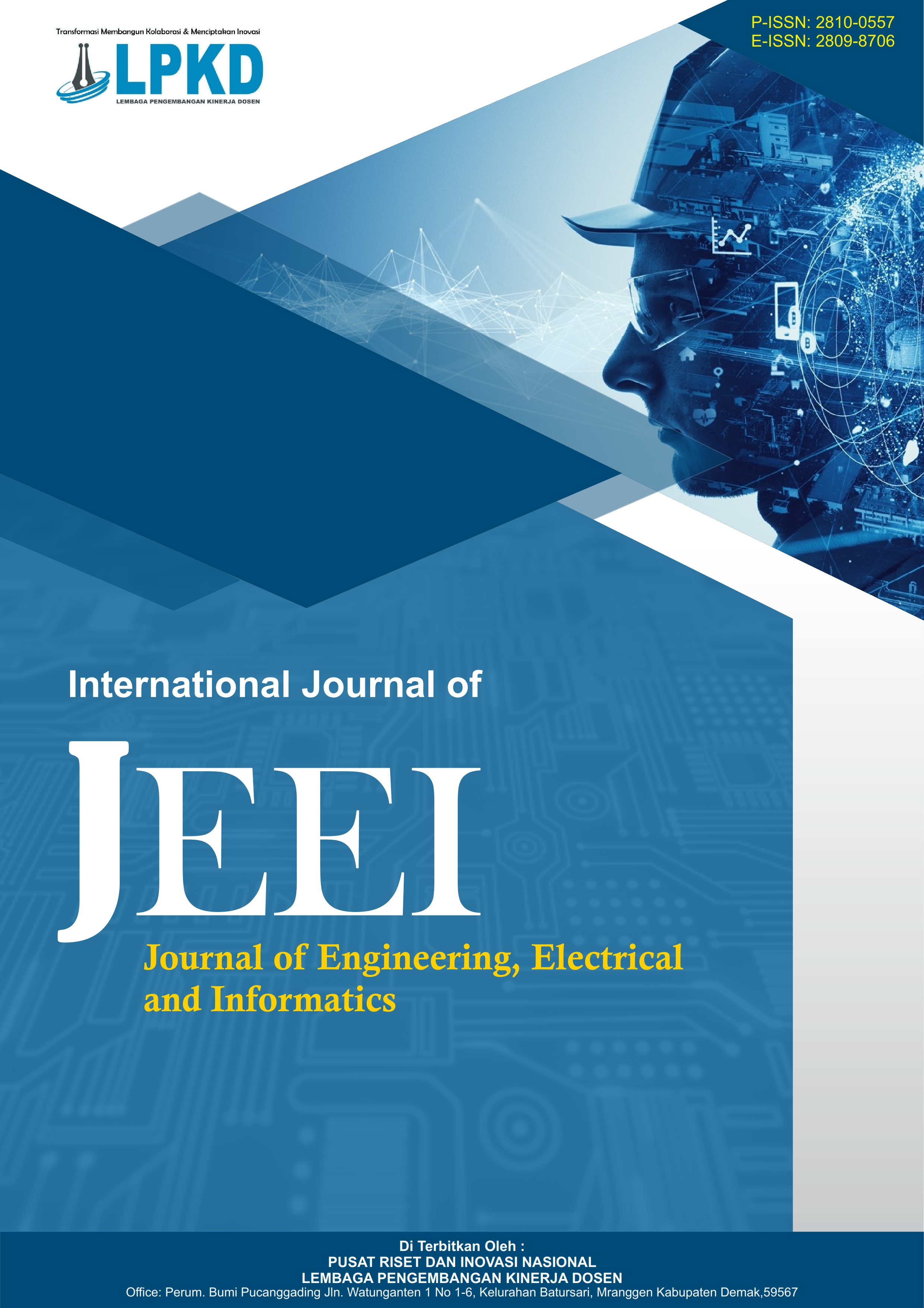MATLAB-Based Learning of Simultaneous Linear Equation Systems
DOI:
https://doi.org/10.55606/jeei.v5i2.4295Keywords:
matlab, linear equation system, matrix inverseAbstract
Problems involving mathematical models are commonly found across various scientific disciplines, such as physics, chemistry, biology, economics, and engineering. These mathematical models are used to represent complex real-world phenomena in order to analyze and understand them quantitatively. However, in practice, these models often take the form of complex, nonlinear, or high-dimensional equation systems, which are not easily solved using standard analytical methods or conventional algebraic formulas. To overcome these limitations, numerical methods are employed as an alternative approach. Numerical methods provide solutions to mathematical problems by relying on computational techniques and iterative procedures. One of the key topics within numerical methods is the solution of Simultaneous Linear Equation Systems (SLES), which frequently arise in practical applications such as structural analysis, fluid dynamics, and economic modeling including structural assessment, flow dynamics, and economic forecasting. Solving these systems often requires a large number of iterative calculations, making manual computation inefficient and time-consuming. Therefore, the use of computational software such as MATLAB becomes essential in both learning and applying these methods. MATLAB provides a broad array of functions and numerical tools this significantly support an efficient and accurate solution of linear equation systems. In an educational context, the use of MATLAB not only simplifies the computational process but also aids students in understanding fundamental concepts of numerical methods through visualization, simulation, and digital experimentation. Thus, integrating MATLAB into the learning process of numerical methods greatly enhances teaching and learning effectiveness, while also strengthening students' computational skills in solving real-world scientific and engineering problems.
References
X. Iqboljon, “System of linear algebraic equations and methods of their solution,” Multidiscip. J. Sci. Technol., vol. 4, no. 1, pp. 39–44, 2024.
[2] N. P. Dongoran, S. A. Wardani, A. C. S. Pane, V. A. B. Sihombing, and V. C. O. Siregar, “PREDIKSI ANGKA PERNIKAHAN DI SUMATERA BARAT 5 TAHUN MENDATANG MENGGUNAKAN IMPLEMENTASI MATLAB DENGAN DERET TAYLOR,” J. Inov. Pendidik., vol. 7, no. 2, 2025.
[3] A. Hysa, M. M. Mahmoud, and A. Ewais, “An Investigation of the Output Characteristics of Photovoltaic Cells Using Iterative Techniques and MATLAB®2024a Software,” Control Syst. Optim. Lett., vol. 3, no. 1, pp. 46–52, 2025.
[4] C. H. Pratomo, W. Kurniawan, and M. A. Kholik, “PENGOLAHAN CITRA DIGITAL DETEKSI NOMOR PLAT KENDARAAN BERBASIS GUI MATLAB,” J. Sci. Res. Dev., vol. 7, no. 1, pp. 204–212, 2025.
[5] S. M. R. H. Moosavi, M. A. F. Araghi, and S. Ziari, “An algorithm for solving a system of linear equations with Z-numbers based on the neural network approach,” J. Intell. & Fuzzy Syst., vol. 46, no. 1, pp. 309–320, 2024.
[6] S. Singh and G. Panda, “Bounding the Solution Set of Overdetermined System of Interval Linear Equations,” Bull. Iran. Math. Soc., vol. 51, no. 2, p. 23, 2025.
[7] A. Wibowo, A. SYAEKHU, and others, “Analysis of Students’ Errors in Solving Mathematics Story Problems on the System of Linear Equations with Two Variables,” J. Digit. Learn. DISTANCE Educ., vol. 2, no. 12, pp. 872–878, 2024.
[8] M. ur Rahman, M. Sun, S. Boulaaras, and D. Baleanu, “Bifurcations, chaotic behavior, sensitivity analysis, and various soliton solutions for the extended nonlinear Schrödinger equation,” Bound. Value Probl., vol. 2024, no. 1, p. 15, 2024.
[9] Y. Mulian, “On the Exact Solution for the Schrödinger Equation. Particles 2024, 7, 1095--1119,” 2024.
[10] A. Patterson and L. Lapworth, “Measurement schemes for quantum linear equation solvers,” Quantum Sci. Technol., vol. 10, no. 2, p. 25037, 2025.
[11] H. R. Maharani, M. A. Basir, and N. L. Ningrum, “Creative Thinking in Prospective Mathematics Teachers: Flexibility in Solving Systems of Linear Equation,” J. Pendidik. Progresif, vol. 14, no. 2, pp. 810–820, 2024.
[12] B. Wang and J. Li, “Discrete-time distributed algorithms for solving linear equations via layered coordination,” Int. J. Syst. Sci., vol. 56, no. 3, pp. 638–657, 2025.
[13] J. Liu and Z. Li, “Bifurcation analysis and soliton solutions to the Kuralay equation via dynamic system analysis method and complete discrimination system method,” Qual. Theory Dyn. Syst., vol. 23, no. 3, p. 126, 2024.
[14] W. A. Faridi, A.-M. Wazwaz, A. M. Mostafa, R. Myrzakulov, and Z. Umurzakhova, “The Lie point symmetry criteria and formation of exact analytical solutions for Kairat-II equation: Paul-Painlevé approach,” Chaos, Solitons & Fractals, vol. 182, p. 114745, 2024.
[15] O. D. Adeyemo and C. M. Khalique, “Application of conserved quantities using the formal Lagrangian of a nonlinear integro partial differential equation through optimal system of one-dimensional subalgebras in physics and engi-neering,” Open Phys., vol. 22, no. 1, p. 20230155, 2024.



.png)
.png)


